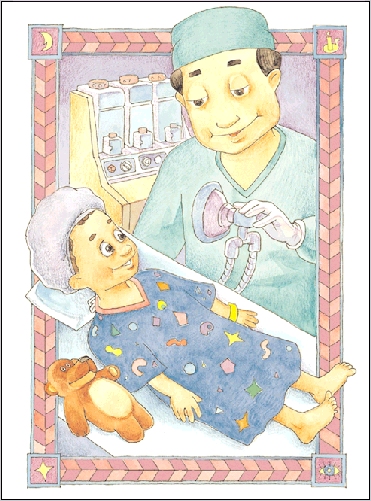Tonsil, Adenoid, and Ear Tube Surgery: Anesthesia
Tonsil, Adenoid, and Ear Tube Surgery: Anesthesia
Anesthesia is medication that allows your child to sleep through surgery. It is given by a trained specialist called an anesthesiologist or nurse anesthetist. This health professional will also closely monitor your child during the procedure.
How anesthesia works
When it is time for surgery, your child will be given sleep-inducing gas through a mask. After he or she falls asleep, an intravenous (IV) line may be started in your child’s arm or hand. The IV line is a thin tube that provides medicines and fluids during surgery. IV lines are rarely used for ear tube surgery.
Sam goes to sleep...
Sam goes to the room where he will have his operation. In this room, Sam sees big machines and lights. He hears some loud beeps. The healthcare providers are there with Sam.
The sleep healthcare provider puts a mask over 4-year-old Sam’s mouth and nose. Sam will breathe in (inhale) a special gas or vapor that helps him fall asleep.
Updated:
November 03, 2017
Sources:
Anesthesia for tonsillectomy with or without adenoidectomy in children. UpToDate, General Anesthesia in Neonates and Children: Agents and Techniques. UpToDate.
Reviewed By:
Fetterman, Anne, RN, BSN,Kacker, Ashutosh, MD
